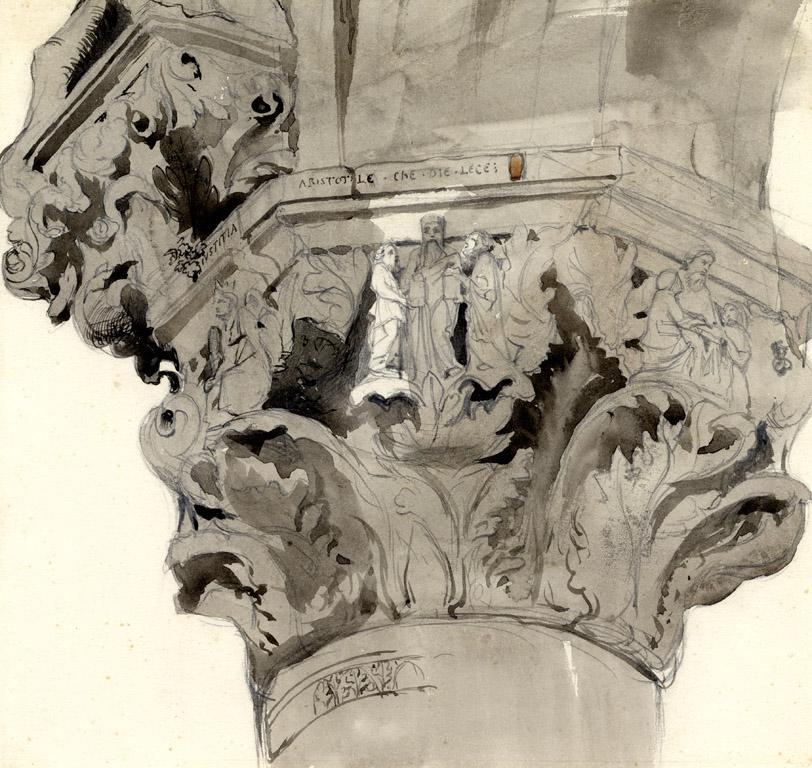When people die, they leave behind a lot of things. When famous people die, they leave behind a lot of things the rest of us can sift through, speculate about, peer into, and otherwise hover over like mystics communing with Ouija boards. Of course, it is a fallacy to believe one can ever truly understand the mind of another by reading the other’s grocery lists (a fallacy the very subject of “John Ruskin: Artist and Observer” once dubbed, referring to a related attributing-of-psychological-value-to-objects, the “pathetic fallacy”). But the living will have their fun.
“John Ruskin: Artist and Observer” at the National Gallery of Canada collects 140 of Ruskin’s artworks—mostly watercolours plus a handful of early photographic works—and, from that assortment, hopes to provide the viewer with a keener insight into the mind of the man many consider (and quite rightly so) the Modern era’s first “celebrity art critic.”
But here’s the conundrum: as lovely, and even occasionally downright striking, as many of the works presented are, Ruskin himself did not identify as a capital-A Artist. Every work on exhibit here is a study, a sketch, a notation—an attempt by Ruskin to understand with his eyes and hands how rocks collide, moss creeps, architecture settles, or mountains surmount. Ruskin was notorious for never finishing a work, and in fact made a point of not being interested in the finished product, but rather in the process of looking, of transferring sight to paper. So, then, how to assess “Artist and Observer” as an art exhibition?
Better not to. Better to indulge in the fallacy that you are somehow lifting the lid off Ruskin’s skull and divining the extispicies revealed by his knotted grey matter.
To wit, Ruskin appears, to me, to have been an extraordinarily impatient man, in the way all cultural omnivores are—his watercolours, especially the mountain paintings and landscapes, have a deliciously manic, hurried quality, one that makes them both feathery and wispy, or the opposite, muddied and smeared (neither being decidedly monumental, as one might expect of paintings of the Alps). And Freud, a fellow Eminent Victorian, would have had a good beard-tug over Ruskin’s obsession with craggy splits in the terrain, deep stone crevices, and pointy, ankle-twisting “rock cleavages.”
Amidst all this sketchy noise, I found myself most drawn to Ruskin’s delicate, still, indeed reverential paintings of birds and animals, especially the jewel-like Study of a Velvet Crab; such works appear, following the above-noted fallacy, to show a very busy (anxious?) mind happily, if briefly, at rest, perhaps even enraptured. It is equally possible to read Ruskin’s many architectural and ruin studies in the same way—their painstaking breathlessness yearns to freeze time.
My only difficulty with “Artist and Observer,” the actual physical exhibition, is one that I have in practically every museum I visit these days—lighting, or rather lack thereof. There must be some way to adequately light fragile works on paper that does not subsequently require the visitor to squint at said works. Furthermore, the National Gallery’s choice of wall colours—too-absorbing deep-sea blues and storm-cloud charcoals—only makes matters worse. At times, one feels one is trying to caress a butterfly inside a submarine.









